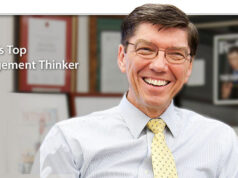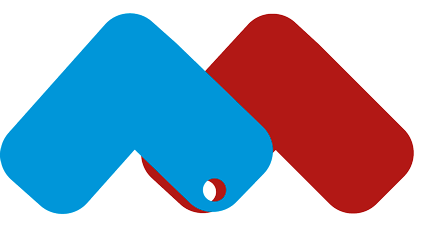Authored by Christine MacNulty
The future is about potential and possibility, not a regurgitation of the past (see the 11-Step Vision-Based Planning Part 2). This is the most important and least understood part of the Vision-Based Planning (VBP) workshop process.
Planning is not about making the future look like the past, it’s about possibilities and potential, and that requires creativity and imagination. To do this we need to think futuristically and definitely out-of-the-box.
In this article we describe a very small selection of the many techniques we use – more details are given in the book. We use the general rules of brainstorming, with particular emphasis on “No criticism.”
Semi-Analytical Techniques Requiring Subjective Judgment
These are techniques that are often based on both analysis/data of the past and subjective judgment for the future. They are generally used to assess the magnitude of issues of concern to the participants, or dilemmas facing their organization for which there has been no detailed analysis performed.
We either ask the participants to prioritize the importance or urgency of the concern or issue under consideration or to rate it on a scale of 1-10 or 1-100.
Critical Issues and Dilemmas
“Unmentionables”
Energy Centers
Mind-Map[1]
Pinwheel: Assessment of Capabilities
Reframing
Identifying the Essence
BCG Matrix
Development Curves
Nth Order Effects
Intuitive/Creative Techniques
These are techniques that are not based on data or analysis but on imagination and creativity, and it is from these that many extremely successful ideas for new business, new technologies, and new businesses have come.
Teamwork: Guided Imagination
Futuristic Guided Imagination
The Metaphor
The “Ideal If”
Science Fiction
Wild (Low-Probability/High-Impact) Ideas
Advice to the Vision Makers—Brief Synthesis
Energy Centers
Energy Centers are filters through which the participants are asked to look at the organization throughout the rest of the workshop.
These “filters” may come from reframing the nature of the organization’s business or from a discussion of the issues and particularly the dilemmas. They are so-called because we want the participants to focus on the one they feel the most passionate about and into which they are willing to put a lot of energy.
____
READ ALSO: How to use Design Thinking for your Innovation Process
_____
Once the participants have decided on energy centers and have given them names, we post them at intervals around the room. Then we ask the participants to walk to the one on which they want to work.
If there is an imbalance, we ask for volunteers to move so the centers have approximately equal numbers of participants. We also ask for one person to volunteer to champion each Energy Center—to plead for it and its importance to the organization.
Reframing
There are several definitions of Reframing. In this context, it is a technique that refers to a frame of reference: internal (beliefs, values) or external (rules, policies).
It is the process of seeing, hearing, or feeling the object, situation, or circumstance differently—from different perspectives, through different lenses. We have spoken about reframing earlier in the context of identifying the nature of an organization’s internal and external environments.
It is useful to think about reframing before conducting the analysis as, in the example we gave, if we are considering a house of the future, we will be thinking about very different things than if we consider a home of the future.
We think they just don’t “get it,” whereas we may be the ones not getting it
The reason that this is an important concept is that, very often, we see something so clearly that there is no doubt in our mind that we know exactly what it is, what it looks like, where it came from.
We focus on it so intently that, when someone else sees something different, we think they are crazy. We think they just don’t “get it,” whereas we may be the ones not getting it. Or one of us may be seeing a symptom of something rather than the underlying cause.
Futuristic Guided Imagination
We use this technique when we want the participants to build a shared perspective about some aspect of the future. We start the process of Guided Imagery by setting the scene, and then we ask for the picture to be fleshed out and expanded by having the participants contribute ideas and comments.
_____
READ ALSO: Otto Scharmer; The World of Today and Tomorrow
_____
We may ask for the group to visit someone, and we ask them to describe the scene in detail. For instance, “This is the year 2040, and we are visiting the CEO of Corporation X in his office. Where is his office? What does it look like from the outside? We go in through the main entrance—what do we see, hear, feel, and smell? If his office is on the top floor, how do we get there (elevator or “Beam me up, Scottie?).
Do we walk, or are there some form of walkways? What does the door look like? Do you knock and turn a knob or handle, or does it open on your approach? What does the office look like inside? What sorts of technology do you see?”
Often, if we are considering technologies, we may ask the participants to visit a huge warehouse and describe the kinds of things they see.
The Metaphor
This is a fun technique that is designed to get people to use their creative/intuitive capabilities. In fact, it is more than that. Each individual has a conscious mind and a subconscious or, more correctly, an unconscious mind.
The conscious mind is about thoughts and feelings we are aware of. It is partly responsible for observing, analyzing, thinking, and rationalizing. The subconscious mind performs auto-pilot functions, such as breathing, and even motions related to driving an automobile. It also controls feelings and emotions and contains memory. It is this part of the mind that we “tap into” when we use this technique.
The technique is called Metaphor, although it is really a simile (we did not invent this technique or its name!). We facilitate this session with 15 to 20 people in each group. We make the statement: “The future of this organization is like…” and we ask the participants to call out anything that pops into their heads. It could be a word, a color, a song, a movie…anything, no matter how strange.
We’ve had clients come up with such similes as pregnant salmon, Pink Floyd, sunrise, red balloon, bougainvillea, leaking ship, and Captain America. In other words, they will tell their colleagues that “The future of our organization is like a pregnant salmon!”
We then select the three most outrageous similes and unpack them by asking: “What are the characteristics of a …?” After doing this for all three similes, we ask: “What is this telling us about the organization?” The results are typically amazing, and the insights are always pertinent to the organization.
For instance, bougainvillea has come up for several military organizations. When asked about the characteristics, the answers have been: When it has plenty of water, it produces lots of leaves and it grows, but it does not produce flowers. When it’s suffering from lack of water, it produces flowers. In other words, according to the group’s interpretation, declining budgets often trigger more creativity and invention.
What’s more, the participants have great fun doing this technique. There is always a lot of laughter, which breaks down barriers and creates a much more cohesive group.
The “Ideal If”
Following the Metaphor, we usually go into a small group session on the “Ideal If.” Each group brainstorms to complete the thought: “It would be ideal for the future of this organization if…” Their answers may cover a very broad range of topics, from reorganizing to moving geographically or into new areas of business, or developing new technologies or products.
In this session, we may ask them to take a look at the Unmentionables (things that might get them fired and to incorporate ideas related to solving the problems expressed in that session into this one. When they have more than 30 ideas, we ask them to collate, discuss, and prioritize them. Since this is a brainstorming session, the ideas do not have to be relevant for, or achievable today. In fact, the more creative the ideas, the better.
Science Fiction and Wild (Low Probability/High Impact) Ideas
Working in small groups, the participants bring in ideas from science fiction, fringe science, and fantasy. We ask them to identify ideas from books and movies that might be useful for the organization—in terms of new technologies, products, and services, or to give it an edge over its competitors.
We want them to consider really wild ideas, and we push them to think out-of-the-box, and nothing is too wild or way-out
We want them to consider really wild ideas, and we push them to think out-of-the-box, and nothing is too wild or way-out. We have had all kinds of ideas emerge, from Romulan cloaking devices for the Navy SEALs to telekinesis, mind-melding, zero-point energy, and controlling computers with your mind. We then ask questions about what kind of things we have or do currently that approximate the ideas; how could we achieve similar results in different ways.
Sometimes we ask what would happen if we completely reversed the capability. To use the previous example, a Romulan cloaking device makes people invisible. We might reverse that and ask: “Would there be any benefit to being super-visible?” And that reverse questioning has led to some remarkably useful developments.
Key Points from this Chapter about Vision-Based Planning: Tools and Techniques for Workshops
We have given you a range of techniques that we use most frequently in our Expansionary/ Exploratory workshop to get participants to think creatively and out-of-the-box.
There are creative, imaginative, and semi-analytical techniques, as well as specific examples of how and when we have used them. Play with these techniques and have fun; there are no right or wrong answers.
Editor’s Note: This Article about Vision-Based Planning: Tools and Techniques for Workshops – is excerpted from Strategy with Passion: A Leader’s Guide to Exploiting the Future by MacNulty & Woodall
[1] Mind-mapping was developed by Tony Buzan more than 30 years ago as a way to encourage the nonlinear development of ideas. His first book that included the subject was: Use Both Sides of Your Brain, Plume/Penguin, NY, 1991.









Thank you Dennis – Thank you, Christine MacNulty. Lots of great takeaways here to make some real-life improvements in one’s own organization. Excellent work. THANK YOU.
Great insights here from Christine, as always. Thanks for sharing with your impressive audience!